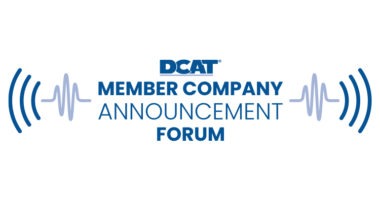The Top 10 Issues for the Pharma Industry in 2017
From healthcare reform, to slowing global pharmaceutical industry growth, to a possible showdown in biosimilars, DCAT Value Chain Insights examines the top 10 items that should be on your pharmaceutical market radar for 2017.
A new year brings promise but also challenges, so what may be in store for the industry in 2017? DCAT Value Chain Insights examines the key developments to watch in 2017.
A top 10 countdown for 2017
1. Global pharmaceutical industry growth moderates. As always, an overarching issue will be the performance of the global pharmaceutical industry, which is expected to see positive growth but at moderating levels in 2017 and beyond. Total spending on medicines is forecast to reach $1.5 trillion by 2021, up 33% from 2016 levels, but down from recent high growth rates in 2014 and 2015, according to a recent analysis by QuintilesIMS. Medicine spending will grow at a 4% to 7% compound annual growth rate (CAGR) during the next five years (2016–2021), down from the nearly 9% growth level seen in 2014 and 2015. The short-term rise in growth in 2014 and 2015 was driven by new medicines in hepatitis and cancer that contributed strongly to growth but will have a reduced impact through 2021. On a volume basis, the total volume of medicines consumed globally will increase by about 3% annually through 2021, only modestly faster than population and demographic shifts. Issues of pricing, market-access pressures, lower volume growth in emerging markets, and further generic-drug incursion will contribute to the lower rate of growth, according to the analysis.
| Table I: DCAT Value Chain Insights: Top 10 Issues to Watch For in 2017. | |
| Ranking | Issue |
| Number 1 | Global pharmaceutical industry growth moderates. |
| Number 2 | US pharmaceutical market growth slows. |
| Number 3 | US healthcare policy reforms. |
| Number 4 | Biosimilars showdown. |
| Number 5 | Innovation outlook: a rebound or not in new drug approvals. |
| Number 6 | Slowing growth in emerging markets. |
| Number 7 | The strength or weakness of venture capital financing. |
| Number 8 | Patient-centric healthcare intensifies. |
| Number 9 | Easing into value-based payments. |
| Number 10 | New technologies’ impact on pharma. |
|
Compiled by DCAT Value Chain Insights editorial staff. |
|
2. US pharmaceutical market growth slows. The US is the largest pharmaceutical market globally, and so the performance of the US market is crucial for overall industry performance. Single-digit spending growth is forecast for the US market, according to the QuintilesIMS report. The US market growth rate will decline by half, from 12% in 2015 to 6% to 7% in 2016 with a 6% to 9% growth forecast through 2021 on an invoice-price basis. The decline reflects the end of hepatitis C treatment-driven growth and greater impact of patent expiries—including the introduction of biosimilars—following a period in which fewer brands faced new generic competition, according to the QuintilesIM study. Despite the slowing growth, the US will account for 53% of forecasted global pharmaceutical industry growth of $367 billion through 2021 (at ex-manufacturers’ pricing and constant-dollar basis.
US growth in 2014 and 2015 also was driven by historically high price increases for both brand drugs and generics on an invoice-price basis before the impact of off-invoice discounts and rebates. After adjusting for price concessions by manufacturers, US spending growth is estimated to be more than 2 percentage points lower through 2021 and 4 percentage points lower in 2016—a 4% to 7% CAGR on a net-price basis.
3. US healthcare policy reforms. US healthcare reform is an overarching issue for the US market, and given the country’s position as the number one market globally, for the global pharmaceutical industry. The Patient Protection and Affordable Care Act (ACA), signed into law in March 2010, provided for healthcare reform in the US. The future of current US healthcare policy is now under review with various scenarios for repeal and replacement of the ACA under Congressional consideration as well as legislative efforts to maintain current policy. Healthcare policy is a top priority for the new Presidential administration, and how it will play out in 2017 will be a key issue for the pharmaceutical industry.
4. Biosimilars showdown. A key US Supreme Court decision regarding biosimilars in the US is on tap for 2017. In January 2017, the US Supreme Court agreed to review a case, a dispute involving Amgen and Novartis’ Sandoz, regarding the interpretation of notification requirements under the Biologics Price Competition and Innovation Act of 2009 (BPCIA), which set the US regulatory pathway for biosimilars. The case deals with Sandoz’s Zarxio (filgrastim-sndz), which was approved as the first biosimilar in the US in March 2015 and is a biosimilar to the reference product of Amgen’s Neupogen (fligrastim). A federal appeals court had earlier ruled that a 180-day notification required under the BPCIA by a biosimilar developer to the innovator company follows US Food and Drug Administration approval. Sandoz is arguing that the notification should be able to occur earlier in the development process. The US Supreme Court will hear the case later this year, which will have implications for biosimilar launches in the US.
5. Innovation outlook: a rebound or not in new drug approvals. A key issue in 2017 is whether the pharmaceutical industry will rebound from a recent low in new drug approvals. In 2016, the US Food and Drug Administration’s Center for Drug Evaluation and Research approved 22 new molecular entities (NMEs), which was a 51% drop compared with the 45 NMEs approved in 2015 and the lowest total on NME approvals since 2010 when 21 NMEs were approved. From 2011 to 2015, NME approvals had been on an upward trajectory (with the exception of 2013) with 30 NMEs approved in 2011 and 39 in 2012. The exception was in 2013, which had a decline to 27 NMEs, but levels jumped again to 41 NMEs in 2014 and peaked at a recent high of 45 approvals in 2015. For the pharmaceutical industry, the key question is whether NME approvals will rebound in 2017.
6. Slowing growth in emerging markets. Emerging markets have been a strong contributor to overall pharmaceutical industry growth, but lower economic growth in emerging markets is resulting in slower growth in pharmaceutical industry growth in those markets. Leading pharmerging markets, defined by QuintilesIMS as low-income countries with high pharmaceutical growth, have seen real growth in gross domestic product slow from 1-4 percentage points over the past decade, according to the firm’s study. This has triggered a corresponding reduction in medicine volume growth, from an average of 7% annually over the past five years to 4% forecast through 2021. China, in particular, will see a decline in annual volume growth from 17% to 4% over the same period. Overall, volume growth continues to be driven by non-original products (i.e., generics) that account for 91% of the volume in pharmerging markets. The outlook for spending growth across these markets is expected to moderate from 10% CAGR over the past five years to 6% to 9% through 2021.
7. Venture capital The flow of venture capital funding is an important measure for the health of the emerging pharma sector, so what might be expected in 2017? Overall, across all industries, Investment in venture capital-backed companies based in the US ended 2016 on a weak note, as quarterly deals and dollars fell for the second-consecutive quarter, according to the MoneyTree Report from PricewaterhouseCoopers LLP (PwC) and CB Insights. In the US market, deals and dollars dropped 16% and 20%, respectively in 2016, compared to the previous year. Globally, the trend was similar, with global deals and dollars declining 10% and 23%, respectively in 2016, compared to full-year 2015. The US full-year funding total in 2016 of $58.6 billion represented a 20% drop from 2015 while cumulative deals of 4,520 fell 16%. In this overall environment, the key issue is how investors’ appetites will translate to the biopharmaceutical/life-sciences sector.
8. Patient-centric healthcare intensifies. Cited by PwC in a recent analysis of key healthcare trends for 2017, the study asserted that patients will increasingly become a strategic partner for pharmaceutical companies. “Facing increasingly challenging reimbursement and regulatory environments, as well as new trends in consumerism, pharmaceutical companies will likely better engage with patients to justify prices, show value, and satisfy calls by regulator,” noted PwC in the recent analysis.
9. Easing into value-based payments. Another important issue to watch for in 2017, according to PwC, involves the role of value-based systems. “To date, new programs and payment models have largely involved upside risk for healthcare providers,” according to the PwC analysis. “But this will begin to change… as the training wheels for these risk-based arrangements are eased off.”
10. New technologies’ impact on pharma. An ongoing issue for the pharmaceutical industry is how new technologies, particularly digital-related technologies, will impact drug development and commercialization. The PwC report notes emerging technologies in healthcare as a whole, such as artificial intelligence and 3D printing and their impacts on business models, operations, workforce needs and cybersecurity risks as well as the positive impact of a digitized supply chain in reducing manufacturing costs.






